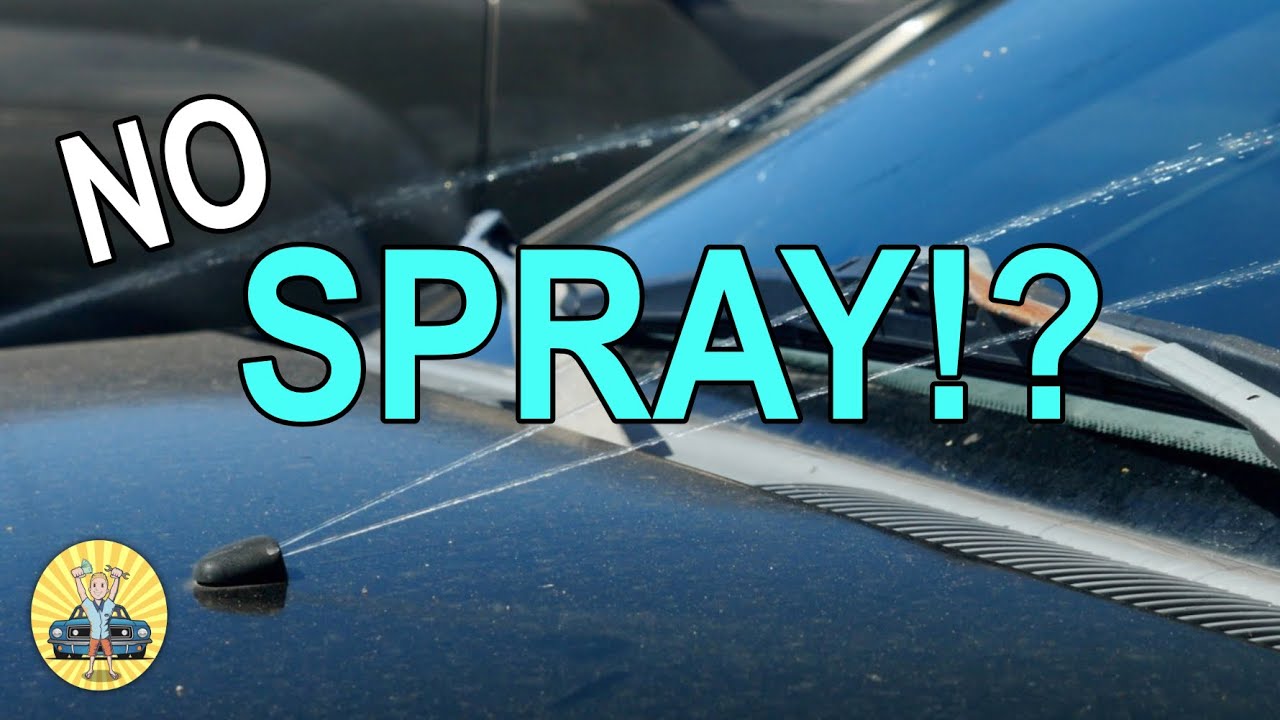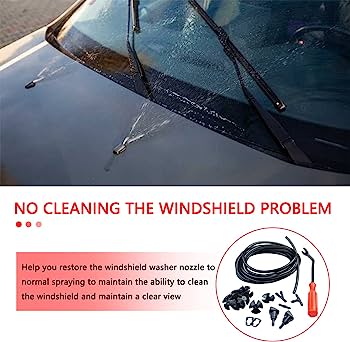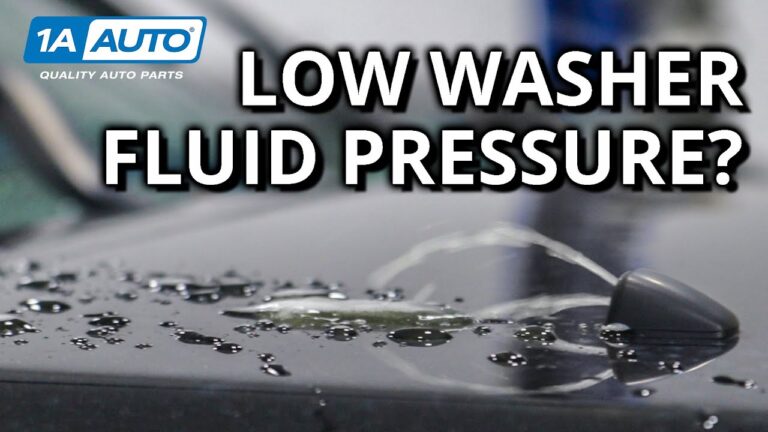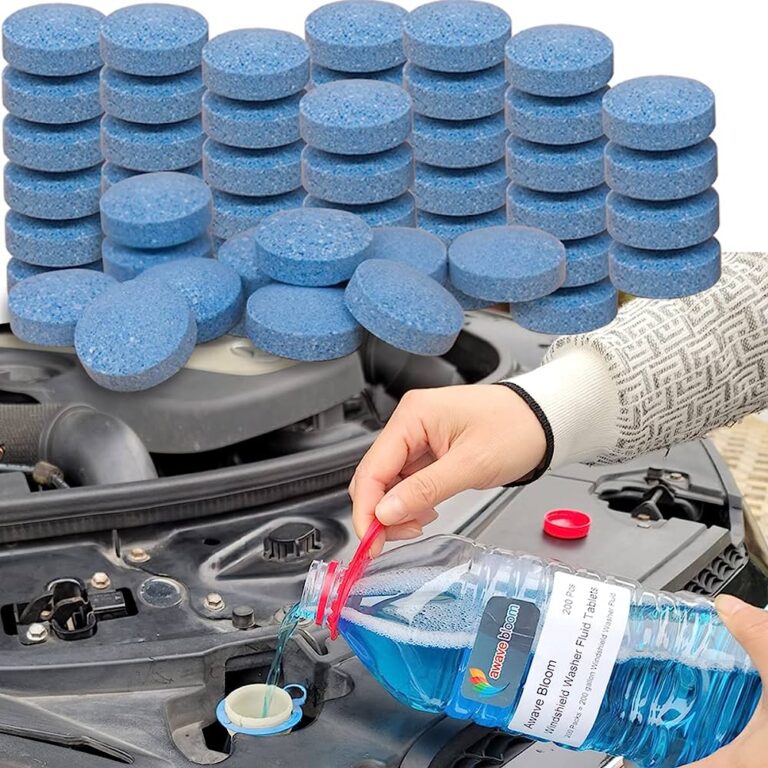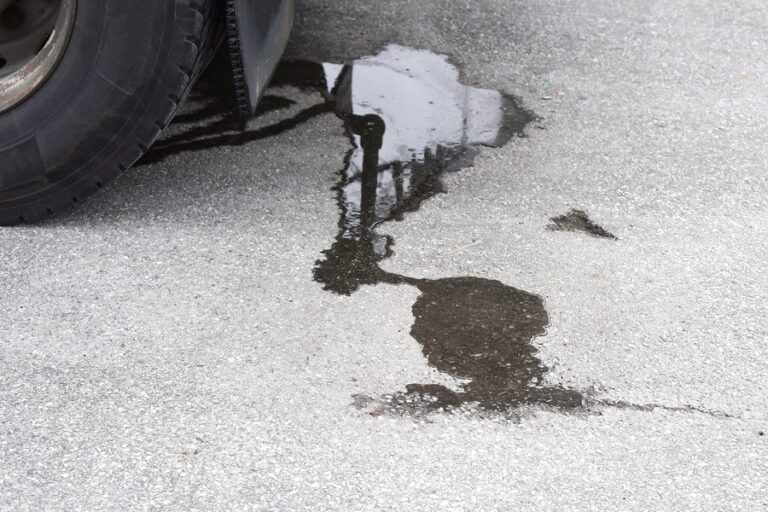Windshield Washer Fluid Not Coming Out: Troubleshooting Tips
Windshield washer fluid not coming out is a common problem that many drivers experience. This issue can be caused by a variety of reasons, including a clogged nozzle, faulty pump, or low fluid levels in the reservoir.
Driving with a dirty windshield can be a serious hazard, and it’s essential to maintain your vehicle’s washer system. Troubleshooting the problem can be easily accomplished if you know the basics of how the system works. It’s crucial to diagnose and fix any issues immediately before they escalate into more significant problems.
In this article, we’ll explore some common reasons why your windshield washer fluid may not be coming out, as well as some troubleshooting tips to get it back in working order.

Credit: www.wikihow.com
Common Causes Of Windshield Washer Fluid Failure
Windshield washer fluid is an essential component of any vehicle. It ensures that the driver can have clear visibility while driving. However, failure of this vital fluid could result in severe consequences for the driver. Here are the common causes of windshield washer fluid failure:
Clogged Nozzles And Hoses
- Dirt, dust, and debris can accumulate in nozzles and hoses, leading to clogs that prevent the fluid from coming out.
- When this happens, a low-pressure stream or no stream of washer fluid comes out.
- Regular cleaning of nozzles and hoses can help to prevent clogging.
Damaged Wiper Blades
- Worn out or damaged wiper blades can cause the fluid to spray unevenly on the windshield.
- This can affect the driver’s visibility, making it challenging to drive.
- Replacing wiper blades regularly can prevent this issue.
Dirty Or Old Windshield Washer Fluid
- Over time, the windshield washer fluid can accumulate dirt, dust, and debris, making it less effective in cleaning the windshield.
- Old and stagnant fluid can also harbor bacteria, making it potentially hazardous to the driver’s health.
- Change the windshield washer fluid regularly to prevent this issue.
Broken Windshield Washer Pump
- The washer pump is responsible for providing pressure to the fluid, which allows it to reach the windshield.
- If the pump is broken, the fluid won’t come out, or it will come out with low pressure.
- A professional mechanic should replace the pump if it’s broken.
Electrical Issues
- If the fuse for the washer fluid pump is blown, the fluid won’t come out.
- Electrical issues can also be a factor in pump or motor failure.
- Check and replace any blown fuses and seek professional help for electrical issues.
Low Fluid Level
- When the fluid level is low, there won’t be enough pressure to spray the fluid out of the nozzles.
- A warning light on the dashboard will come on when the fluid is low.
- Refill the washer fluid reservoir promptly to prevent this issue.
By understanding the common causes of windshield washer fluid failure, you can take proactive steps to prevent them. Regular maintenance, including cleaning the nozzles and hoses, replacing faulty parts, and changing the washer fluid regularly, can go a long way in ensuring that your windshield washer system is working correctly.
Signs Of Windshield Washer Fluid Failure
As a car owner, have you ever experienced the frustration of your windshield washer fluid not functioning properly? It is quite common, and there are several reasons behind it. Here are some signs of windshield washer fluid failure that you should look out for:
Smears On Windshield
Do you see a thin layer of dirt or grime on your windshield even after using your washer fluid? If yes, then it’s a sign that your washer fluid is not working properly. The most common reason for this is clogged nozzles.
Other reasons include a damaged or worn-out pump or a broken hose. Here’re some possible causes of smears on windshields:
- Clogged nozzles
- Broken hose
- Worn-out pumps
Unusual Sounds During Operation
Another sign of a washer fluid failure is unusual sounds coming from under the hood during operation. Sounds like clicking, grinding, or screeching coming from the washer pump could indicate a blockage or malfunction. It’s essential to address the issue as soon as possible to prevent further damage.
Here are some possible causes of unusual sounds during operation:
- Blockage in the washer fluid system
- Malfunctioning washer pump
- Dried up or low washer fluid levels
Lack Of Fluid Spray
If you turn on your washer fluid and it doesn’t spray any fluid, it’s a clear indication of a failure. A few different things can cause this issue, such as a broken or loose washer nozzle, clogged lines, or failed pumps.
Here are some possible causes of lack of fluid spray:
- Broken or loose washer nozzle
- Clogged washer fluid lines
- Malfunctioning pumps or electrical connection
Fluid Leaks
Leaking washer fluid is a serious problem and needs attention promptly. Washer fluid leaks can vary from minor to severe and can even lead to component damage if not addressed timely. Here are some possible causes of washer fluid leaks:
- Cracked or broken reservoir tank
- Damaged hoses
- Loose connections
It’s crucial to address the signs of windshield washer fluid failure as soon as possible to prevent further damage to your car and ensure your safety. Regular maintenance and inspection of the washer fluid system can help detect these signs faster so that you can take necessary actions for the next steps.
Troubleshooting Steps
Windshield Washer Fluid Not Coming Out: Troubleshooting Steps
Is your windshield washer fluid not coming out when you activate it? Before taking your car to a mechanic, try these easy troubleshooting steps to see if you can solve the problem yourself.
Checking Fluid Level
- Open the hood and locate the windshield washer fluid reservoir.
- Check the fluid level to ensure it’s not empty.
- If the fluid is low, fill it up with the recommended washer fluid.
- Try operating the windshield washer system again.
Inspecting And Cleaning Nozzles And Hoses
- Examine the nozzles for any blockages or damage.
- Use a pin or needle to clear any blockages from the nozzles.
- Check the hoses for any cuts or leaks and replace them if necessary.
- If the nozzles and hoses are clear and undamaged, try operating the system again.
Inspecting And Replacing Wiper Blades
- Inspect the wiper blades for any visible damage or wear.
- If the blades are damaged or worn, replace them with new ones.
- Old wiper blades can cause the washer fluid to not spray properly since they wear down over time.
Flushing Washer Fluid System
- Sometimes, the washer fluid system can accumulate dirt and debris.
- If the system is dirty, flush it out using washer fluid or warm water.
- Hold the washer nozzle down for a few seconds to flush out any debris.
- Try operating the system again.
Checking And Fixing Electrical Connections
- Check the electrical connections to make sure they’re secure and tight.
- Loose connections can prevent the washer fluid from spraying out.
- If connections are loose, plug them back in and try using the system again.
Replacing Washer Pump
- If all else fails, it might be time to replace the washer pump.
- Disconnect the pump, remove it and replace it with a new one.
- Test the system to ensure it’s working again.
By following these simple troubleshooting steps, you can save time and money by fixing the windshield washer fluid issue on your own.
Prevention Tips
Regular Maintenance Checks
Regular maintenance checks can help prevent windshield washer fluid from not coming out. Here are a few key points:
- Check the fluid levels regularly and top-up as necessary.
- Inspect the washer jets to ensure they are not blocked by dirt or debris.
- Check the hoses for damage or leaks.
Using Appropriate Washer Fluid
Using the right type of washer fluid is important to prevent clogging or damage to the system. Here are a few tips:
- Check your vehicle’s owner’s manual to see the recommended type of washer fluid.
- Avoid using plain water as it can freeze in cold temperatures, causing damage to the system.
- Look for washer fluids that do not contain harmful chemicals that can damage the paint or rubber seals.
Taking Care When Refilling Fluid
When refilling the windshield washer fluid, it’s essential to take care to avoid damaging the system. Here are a few pointers:
- Use a clean funnel to pour the fluid to avoid contamination.
- Do not overfill the reservoir, as it can cause leaks or damage.
- Ensure that the cap is tightly sealed to prevent the fluid from evaporating.
Storing Extra Washer Fluid Properly
Storing extra washer fluid is convenient, but it’s essential to do it the right way to maintain its effectiveness. Here are a few tips:
- Store washer fluid in a cool and dry place away from direct sunlight.
- Avoid storing fluid in open or partially used containers as they can become contaminated with dirt and debris.
- Always follow the manufacturer’s instructions when storing washer fluid.
Frequently Asked Questions Of Windshield Washer Fluid Not Coming Out
Why Is My Windshield Washer Fluid Not Coming Out?
There could be several reasons why your windshield washer fluid is not coming out including clogged nozzles, a blocked hose, or a broken pump. It may also be caused by low fluid levels or a faulty switch.
How Do I Troubleshoot My Windshield Washer Fluid?
Start by checking if there is enough fluid in the reservoir. Next, ensure the pump is receiving power and the nozzles are not clogged. If these are not the cause, inspect the hoses and switches to determine if there is a blockage or malfunction.
Can I Fix My Windshield Washer Fluid Problems Myself?
If the problem is a simple fix like a clogged nozzle, you may be able to solve it yourself. However, more serious issues like a broken pump or electrical fault should be handled by a professional technician.
How Often Should I Replace My Windshield Washer Fluid?
It is recommended to replace your windshield washer fluid every 6 to 12 months. However, if you notice the fluid is murky, has debris in it or has a strange odor, it should be replaced immediately.
What Type Of Windshield Washer Fluid Should I Use?
Use a windshield washer fluid designed for your specific vehicle. Do not use plain water, as it may cause damage to the reservoir, pump, or hoses. Additionally, do not use standard antifreeze as it may cause damage to your car’s paint.
Conclusion
It’s important to address windshield washer fluid issues as soon as they arise to ensure the safety of your vehicle and those around you. With the potential complications that can arise from a malfunctioning system, it’s vital to take the time to identify and resolve the underlying issues.
From frozen hoses to clogged nozzles, there are several reasons your windshield washer fluid may not be coming out. Don’t procrastinate on fixing the issue, as it can lead to more costly repairs down the road. Remember to also regularly check and maintain your vehicle’s fluid levels to avoid preventable malfunctions.
Whether it’s a diy fix or a trip to the mechanic, prioritize resolving windshield washer fluid issues promptly to protect your vehicle and passengers.

